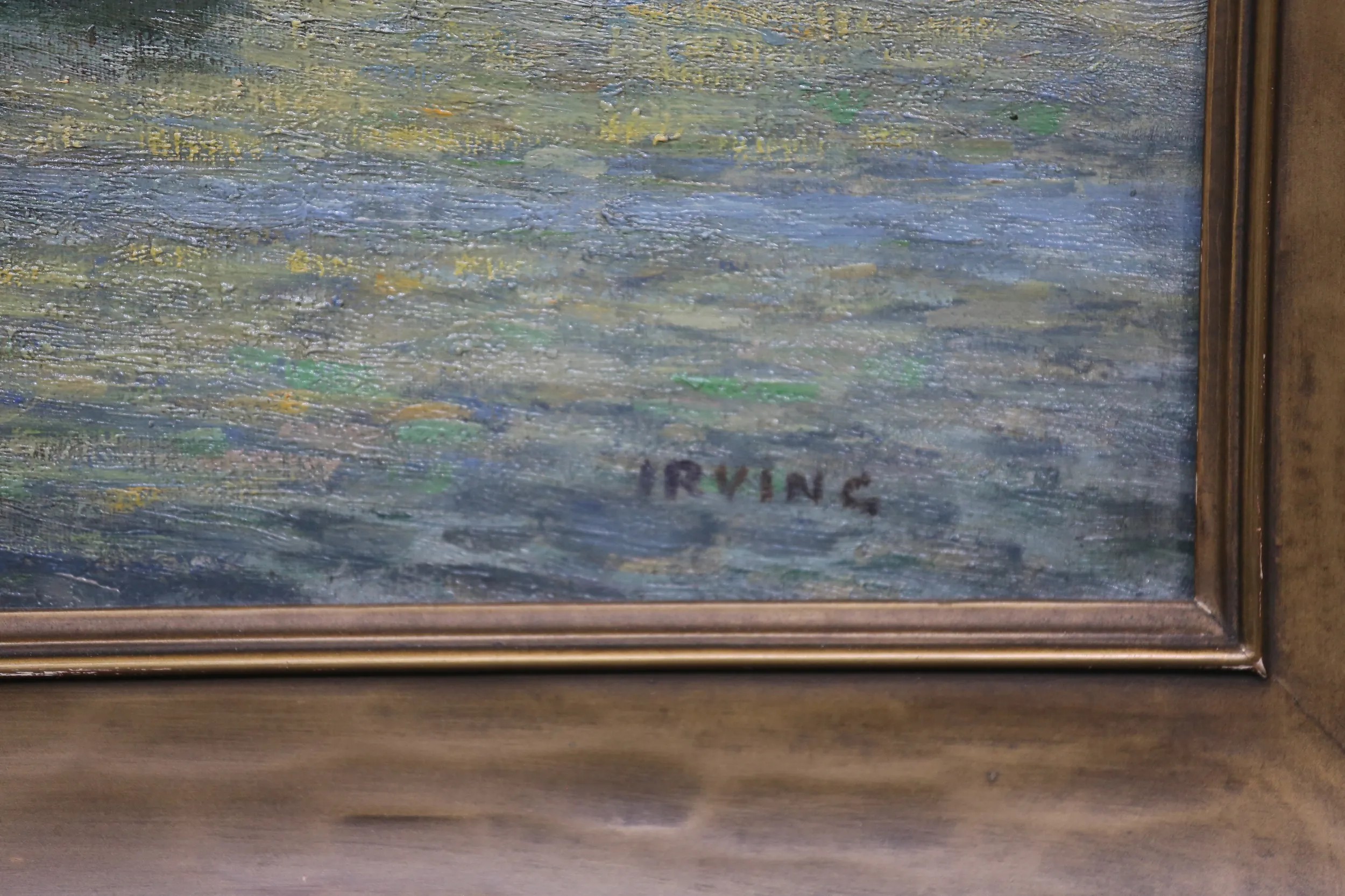GUEST: This would've been purchased by my grandmother. She and her sisters were artists, watercolor artists. They would go over to Chicago occasionally. We're quite sure that this was purchased in Chicago, and it would have resided in my great-grandfather's house until that sort of got broken up when my last aunt died. I technically inherited the painting when my father broke up his house in Tucson, Arizona, which would've been about ten years ago.
APPRAISER: Well, it's a wonderful example of the American Impressionist artist Wilson Irvine's work. And Wilson Irvine was born in Illinois, and was a commercial artist in Chicago, but studied art at the Art Institute at night. And he became one of the great guiding lights of the American Impressionist movement, known for beautiful scenes such as this. The other aspect of Irvine that's interesting is that he was one of the early travelers around the country to the different art colonies. He went to Connecticut, to the Old Lyme art colony, and he went north of Boston to the Cape Ann area, where this painting was painted. It's a scene of Gloucester, Massachusetts. And Gloucester has long been a haven for artists. You have wonderful things, such as the City Hall.
GUEST: Oh, I didn't-- okay, all right.
APPRAISER: Yes, and there is a church, and then this is one of the wharf buildings.
GUEST: Still there?
APPRAISER: Oh, yeah. It's a really wonderful example of the broken light, the water, the palette of American Impressionism. The painting is oil on canvas, and it's in very good condition. I think it could do with a nice cleaning. But it's...
GUEST: Probably never has.
APPRAISER: No, it's in beautiful, original condition, as is the carved frame, which is original to the piece.
GUEST: The frame has seen a little bit of wear and tear and so on.
APPRAISER: The frame can certainly be restored. Frame restoration is not inexpensive. I have the eye of someone who's been in the business for a long time, so my scale of condition is different than yours. I think it's in great condition. I would probably not touch it at all. I think we're looking at a painting that was probably done 1918, 1919, and is really emblematic of his style. The big story here, though-- and I love talking about the art colonies, because it was such a time of cross-pollenization between the different artists. They would travel in the summer and just had a great time learning from their compatriots. The real story here, though, is the American Impressionist market. And I'm so used to my colleagues talking about brown furniture, and how brown furniture isn't doing as well as it had been. American Impressionism is having a bit of a dip now. This is arguably one of the finest Wilson Irvines I've seen of a classic, coastal view of Gloucester, Massachusetts. It has everything that you would want in a Gloucester scene, and everything you would want in a Wilson Irvine. That said, time and tide wait for no painting, and the market isn't as vibrant as it had been ten, 15 years ago. At auction, I would estimate it between $15,000 and $25,000.
GUEST: Okay, very good. Well, thank you-- I'm surprised.
APPRAISER: Ten, 20 years ago, I would've estimated a piece of this quality, subject, and style, and wonderful provenance, at perhaps $50,000 to $75,000, $75,000 to $125,000. Those days are gone for a bit.
GUEST: Okay.
APPRAISER: But it's still the same painting. It's still the same wonderful painting.
GUEST: Sure.
APPRAISER: Different market.
GUEST: Well... c'est la vie.





